Republic of Gamers is ASUS’ pinnacle of performance computing. The brand is associated with high-performance gaming devices across the industry. While there’s always great anticipation regarding the release of its update ranges at the start of each year, the 2025 iterations have induced great fervour, particularly amongst gamers. That’s because it will be the first round of releases to feature the new NVIDIA RTX 5000 series GPUs. The first we’ve picked up for review is the ASUS ROG Strix G16 (2025) G615LW-U91610G0W.
Having joined the Strix community a few years ago, I’ve watched as four new iterations passed by, reviewing many new units whenever available. It’s both great and annoying how quickly technology improvements are rolled out, with my gaming laptop now seemingly outdated in such a short time, while the advancements made in hardware make it seem like they’re not in the same family of products. This year’s release is packed with some of the best hardware, but how much of a difference can a year make?
ASUS ROG Strix G16 Laptop Build and Design
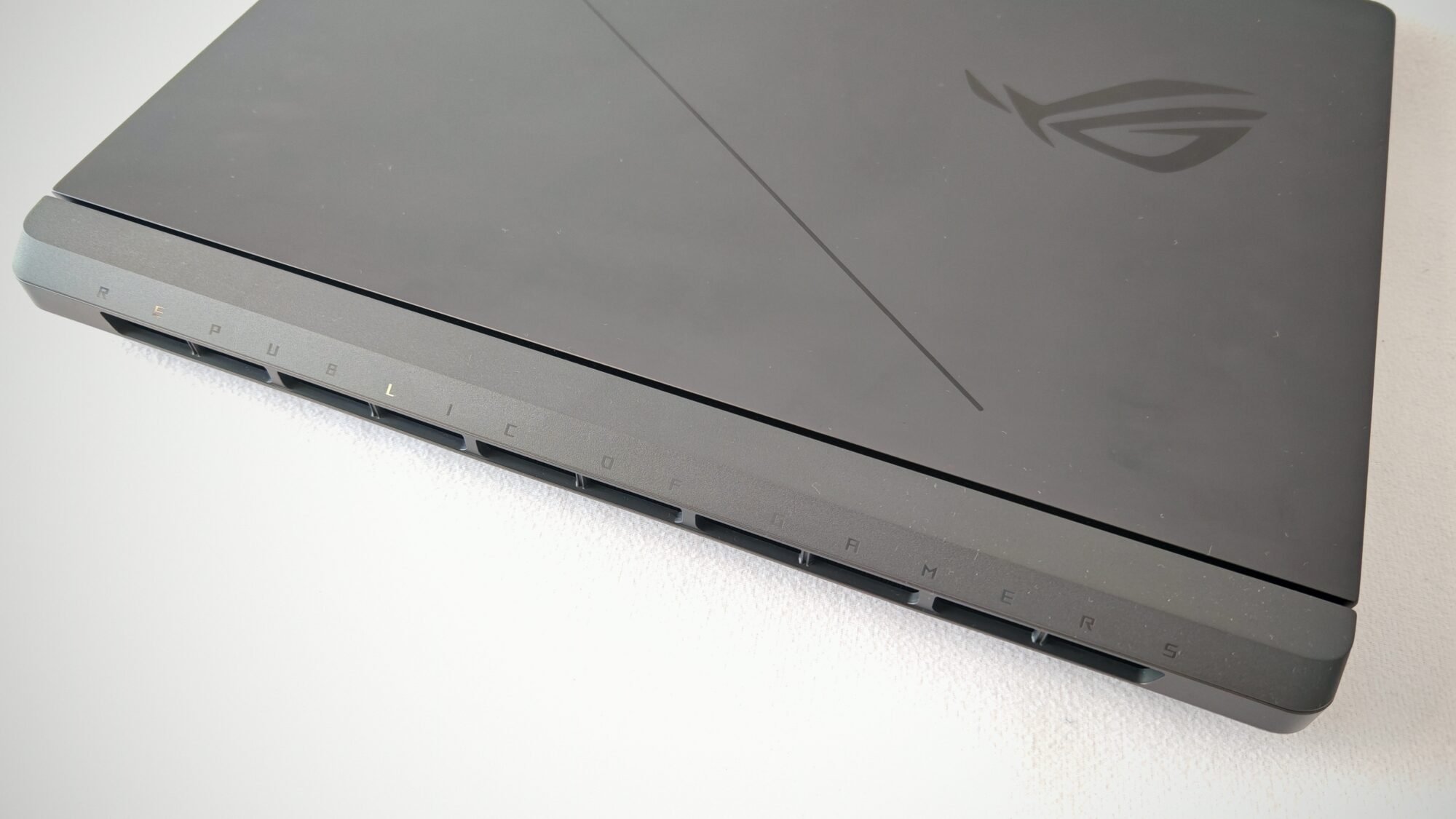
Unlike many other gaming laptop brands, ROG has remained relatively conservative regarding its design. No over-the-top design elements are thrown in without reason, keeping its frame relatively streamlined and lightweight compared to most. That said, there are still plenty of add-ons to enjoy, such as the RGB lighting and the like.
As with many gaming laptops, there is a bit of bulk to account for. The ROG Strix G16 weighs 2.65KG (5.84 lbs). By usual standards, this is quite heavy, more than double that of a unit such as the ASUS ROG Flow Z13, which only weighs 1.2KG, albeit with much less emphasis on extreme gaming and cooling. This has been the norm for years. As such, the weight isn’t an issue at all. However, with the added weight of its 380W AC Adapter, you start feeling the extra load in your backpack when on the go.
Its dimensions are also reasonable for a gaming laptop. At 354x268x22.8~30.8mm (13.94″ x 10.55″ x 0.90″ ~ 1.21″), it’s not the thinnest or biggest laptop around. It can still fit into my standard laptop bag without any issues. Unless you have a bag geared towards an Ultrabook, you won’t have any issues.
In terms of the inputs available on the G16, there’s more than enough to go around. This includes a 3.5mm Combo Audio Jack, HDMI 2.1 FRL, x3 USB 3.2 Gen 2 Type-A, 2.5G LAN port and x2 Thunderbolt 5 (with support for DisplayPort/power delivery/G-SYNC). For once, I can’t complain about the configuration; I always use two Type-A ports and one Type-C port. This leaves one of each available for any additional peripherals you may need during use.
Another aspect of the device users shouldn’t be complaining about here is the touchpad and keyboard. Although it doesn’t have a full-size keyboard (with a Numpad), the keys are large and well-spaced enough for easy typing and gaming. Sufficient function shortcuts, including a dedicated row of keys for audio, performance modes and quick access to Armoury Crate, are available. These keys are also customisable, including a toggle to switch between customised profiles, like turning off the Windows key, touchpad and other keys while gaming. Each key is a backlit chiclet with per-key RGB for individual customisation.
The touchpad on the unit is brilliant. While I don’t use this in regular day-to-day activity, I was thoroughly impressed nonetheless. It’s quite a large surface area as well, easily taking up more than a third of the width of the frame. Not only is it big enough, but it’s also quite smooth and accurate, including all the Windows gestures. I was pleasantly surprised by how nice it was to use.
Overall, while the ROG Strix G16 (2025) doesn’t go all-out in its design, its aesthetic is still elegant with its dark grey matte finish. It keeps all the diagonal lines with most of the ASUS products. There’s also a whole RGB lighting show on offer on the laptop, thanks to its RGB keys, as well as the panel that runs around the entire base of the frame to give it the illusion that it’s floating.
Screen and Display
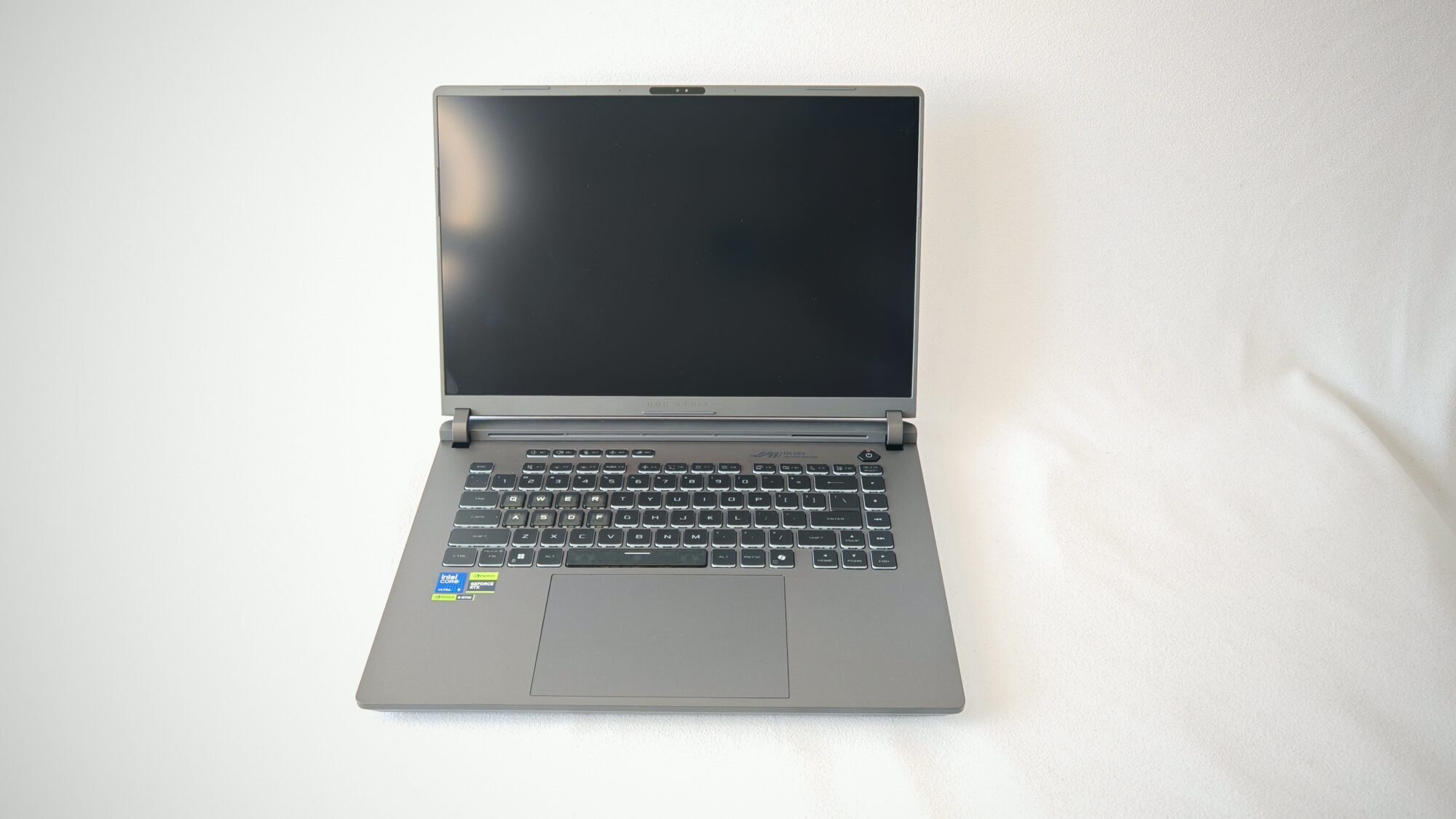
The 2025 panel fitted to the ROG Strix G16 is a slight iteration of the 2024 range. It features a QHD+ 2,560×1,600px (2.5K) mini-LED panel with a matte finish. Many modern creator laptops, such as high-end gaming brands, have switched to OLED panels. However, the Strix and Scar range offers LED matte panels with anti-glare features.
ASUS refers to the panel as the ROG Nebula HDR display. It features a 240Hz refresh rate and 3ms response time on the display. BOE manufactures panels in China with the same model name as some previous iterations.
There are two modes to operate the screen, including single-zone and multi-zone lighting. The first option performs like a standard IPS panel with equal backlighting in the background. However, the multi-zone lighting offers zone dimming, which is preferred for viewing videos and gaming. As a result, it facilitates improved contrast and darker blacks, not quite like an OLED panel, but somewhere in between. In terms of its configuration, it offers Pantone validation MUX Switch and NVIDIA Advanced Optimus for improved battery performance and optimisation.
The display doesn’t do much to stand out from the crowd but is sufficient for your gaming requirements. It works well. However, if you’re looking for an OLED panel for your next purchase, you may need to continue the search.
ASUS ROG Strix G16 Specifications
ASUS has packed the ROG Strix G16 with a solid lineup of hardware. Its specifications include the Intel Core Ultra 9 Processor 275HX 2.7GHz (36MB Cache, up to 5.4 GHz, 24 cores, 24 Threads) CPU. This also features the built-in Intel AI Boost NPU up to 13 TOPS. It includes 32GB DDR5 5600MHz RAM and a 2TB PCIe 4.0 NVMe M.2 (Micron MTFDKBA2T0QGN-1BN15ABYY).
However, the real standout on the device is the inclusion of the NVIDIA GeForce RTX 5080M (Laptop GPU). It includes ROG Boost at 1550MHz, 175W (1500MHz Boost Clock+50MHz OC, 150W+25W Dynamic Boost) and 16GB GDDR7 memory. It may not be as powerful as the full-size 5080, but it still packs a mighty punch.
ASUS has included a 90WHrs, 4S1P, 4-cell Li-ion battery. Also included is a 380W AC Adapter with an output of 20V DC, 19A, 380W. It also caters for charging via the Type-C ports, with a maximum 100W adapter with a 20V DC and 5A output.
Performance
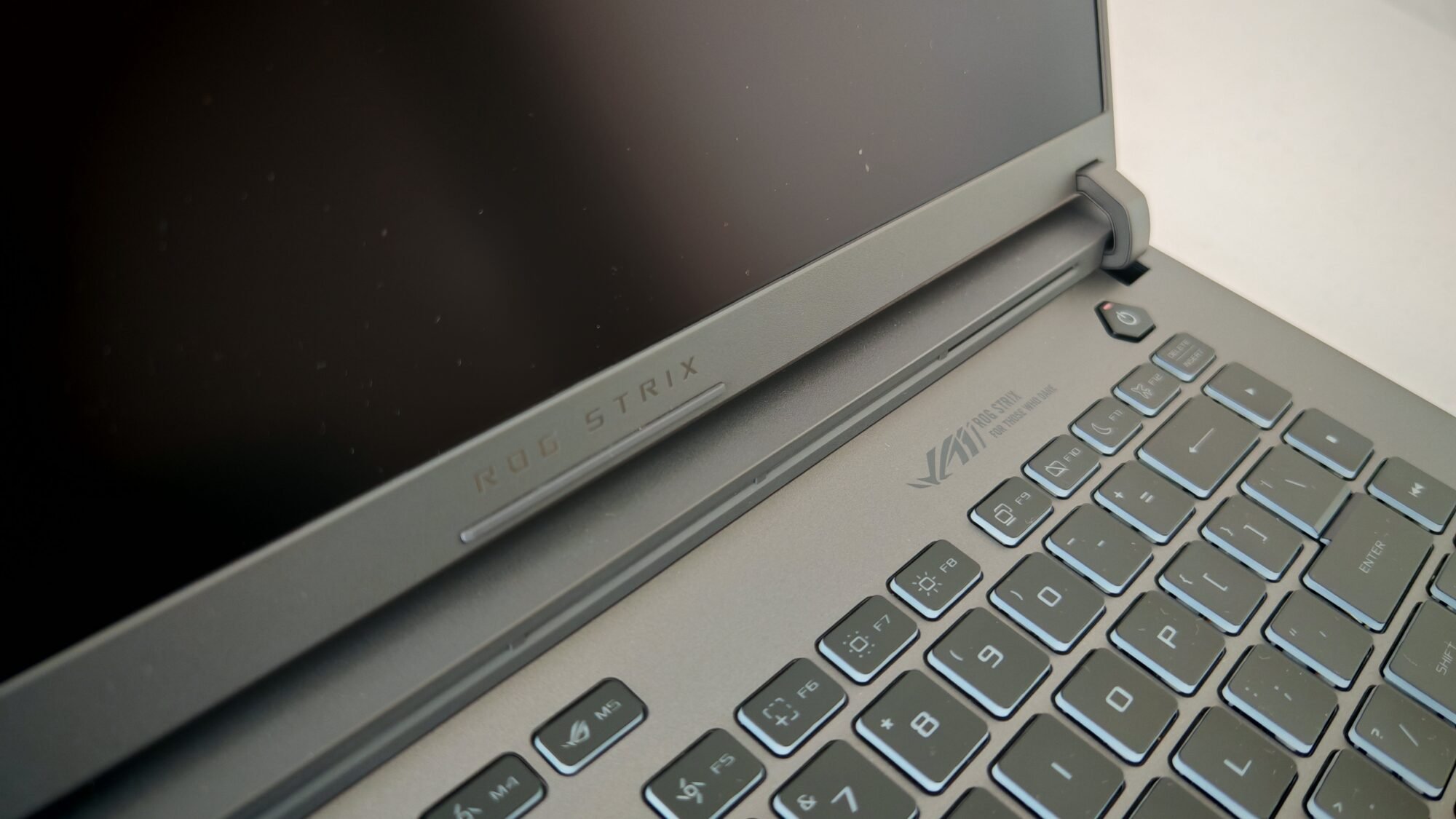
As with most modern ASUS laptops, the performance can be distributed between various modes. For the ROG Strix G16, you can switch between Silent, Performance, Turbo and Manual.
Silent does what it says and runs in the quietest mode while performing reasonably well overall. On average, the CPU runs under 100W; if the GPU is in use, it is below 50W. For the most part, performing daily tasks won’t trigger the GPU; if it does, it will likely be the built-in Intel GPU. As a result, the load would typically be below 30W overall. Noise levels are also minimal, and there is barely any noticeable heat while using on your lap.
Switching things up a tad to Performance mode, there is an audible shift, with the fans triggered ever so slightly. The CPU performance is bumped to over 120W and 150W for the GPU. You’ll notice a higher input drawn from the laptop, nearly doubling the load.
Lastly, in Turbo mode, the laptop pushes above 175W for both the CPU and GPU under load. The fans kick into gear, and there is a noticeable and continuous whisp as the heat increases gradually. You’re not burning your legs if you’re still using it on your lap, but it does become significant to the point where it’s uncomfortable.
You’re not lacking in performance requirements, even when using it in Silent mode, which I tend to do when not gaming. I completed a few stress tests, opening multiple tabs, having videos playing in the background and many other open documents. Even then, opening a new app or performing tasks is crisp. And there’s a noticeable speediness to it as well. Having shown off some of the features to colleagues during testing, their first feedback was to note how quickly everything was. It’s brilliant.
Switching to the gaming, things are just as good. I had quite a bit of fun testing the performances of some of the various AAA games available, a few of which were released within the last six months. For all games, I tested using its maximum settings for the graphics, all of which still operated at excellent frame rates. That said, I tested it at the maximum resolution of the laptop, switching between 1080p and its native 2.5K setting.
Here are the results:
| Game | Resolution | Settings | FPS |
| Clair Obscur: Expedition 33 | 2.5K | Ultra | 55-60 |
| Marvel’s Spider-Man: Miles Morales | 2.5K | Ultra | 100-120 |
| Red Dead Redemption 2 | 2.5K | Ultra | 30-90 |
| Bro Force | 2.5K | Maximum | 120 |
| Sonic X Shadow Generations | 2.5K | Maximum | 60 (threshold) |
| Avowed | 2.5K | Epic | 60-90 |
| Indiana Jones and the Great Circle | 2.5K | Supreme | 60 (outdoors) 120 (indoors) |
| Starfield | 2.5K | Ultra | 180 |
In most cases, I also enabled the DLSS to boost gaming performance. I didn’t specifically look at the differences between having this toggled, but I enabled all the NVIDIA-enabled performance improvements available.
The overall results and frame rates achieved were impressive. While all games performed at sufficient frame rates, even at the maximum available graphics settings, some more optimised games did well. The effects of the 240Hz panel, although not maximised in these cases, were also excellent for the overall experience.
Battery
The unit features a 90Wh battery. This is adequate for any laptop, but you have to consider that the G16 may draw much higher loads to manage its performance.
For general use, such as editing documents, working in Excel and similar daily tasks, I operated the device using Silent Mode, which resulted in an average of 25-30w. In this mode, you can typically eke out about four hours of use if you’re continuously busy for that amount of time. You can push it to five hours with a few breaks in between.
Watching videos on YouTube via the browser while staying in Silent Mode also yielded similar results. Here, it can be pushed to five to six hours of continuous streaming over WiFi and 50% screen brightness. With Netflix using 4K settings and streaming HDR support, it jumps from 20w to 30w, reducing the battery to under four hours of use.
Moving things up a notch, using Performance Mode for gaming, the laptop draws around 100w of power. Using the same screen brightness at 50% with WiFi and Bluetooth enabled, you can get a generous helping of about an hour of gaming. I wouldn’t recommend using Turbo mode, as you’ll be lucky to achieve 30 minutes before reaching for the charger.
I can’t say these results are great, but three to four hours under regular operation would be sufficient for me. A gaming laptop or PC is something to consider if you’re attempting to keep electricity usage to a minimum, but that comes with the territory. The overall battery performance of the ROG Strix G16 is good enough for most users.
Is the ASUS ROG Strix G16 (2025) Worth It?
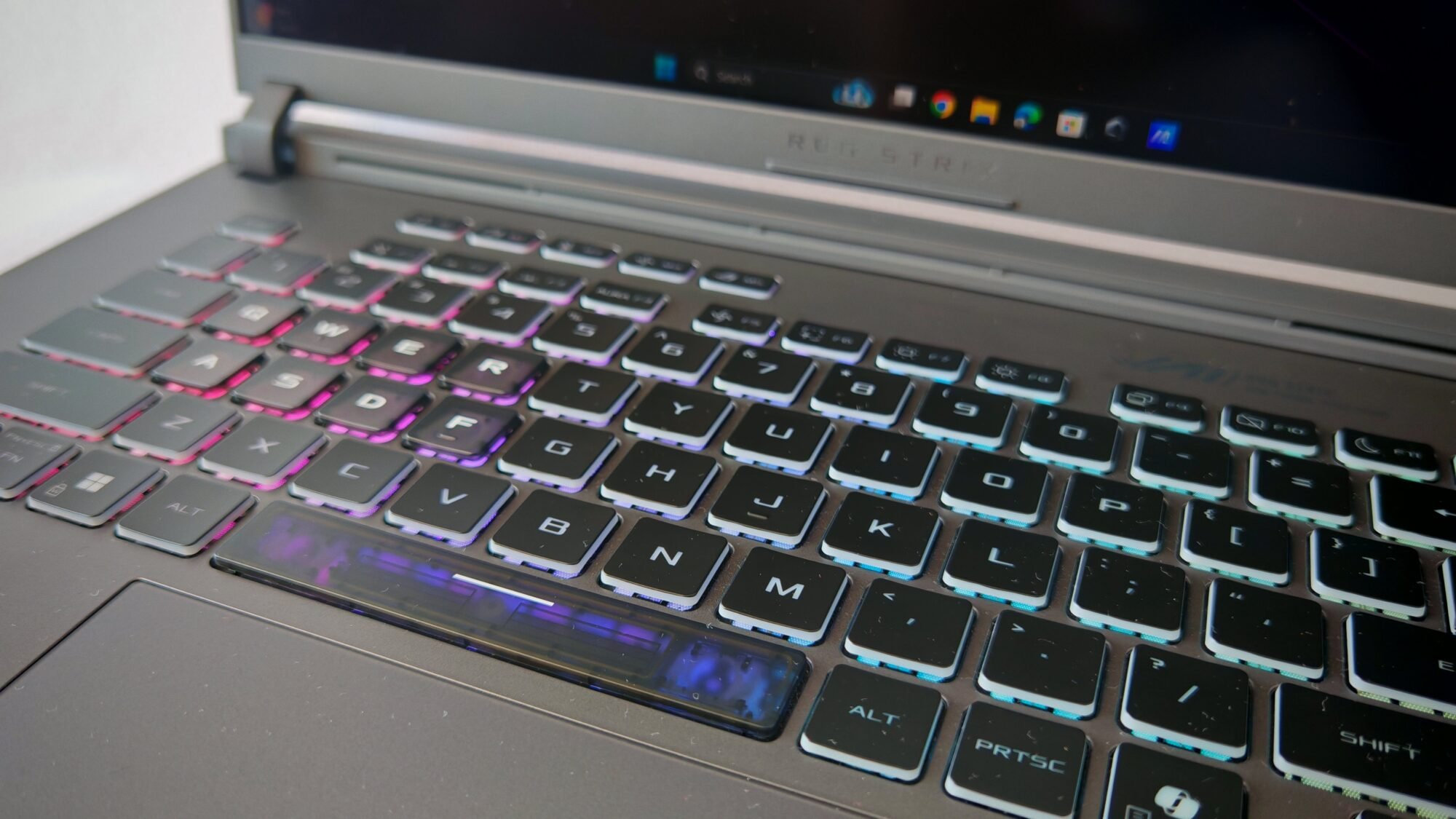
The answer is a definite yes. Even if you’re coming from the 2024 range iteration, the ASUS ROG Strix G16 (2025) is quite a significant jump between models. This is mainly due to including the new NVIDIA RTX 5000 series GPUs. Although this isn’t the highest offering, in terms of specifications, for the ROG brand, the device still performs better than most gaming laptops in 2024.
At a cool R75,000, the unit doesn’t come cheap. It won’t be suited for most budgets, but if you do have the kind of money, it’s worth it. There is still plenty of performance on the table, mainly because it uses the first wave of software and drivers available. With each update, you’ll be guaranteed to enjoy improved performance for years.
RELATED: ASUS Zenbook Duo (2024) UX8406 Review – Twice as Impressive
The Review
ASUS ROG Strix G16 (2025)
I was anticipating good things with the new series of RTX 5000 series laptops, but the ASUS ROG Strix G16 (2025) has already surpassed all of my expectations. It's a competent gaming laptop and a dream for gamers looking for the ultimate portability.
PROS
- Extremely powerful hardware
- 2.5K matte panel with 240Hz refresh rate
- Decent number of ports
- Large touchpad
- Useful profile performance switching
CONS
- Pricey
- Battery life could be better
- Lid picks up fingerprints






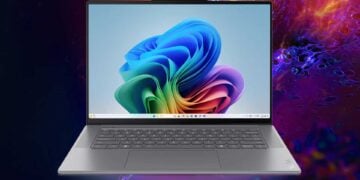




Discussion about this post